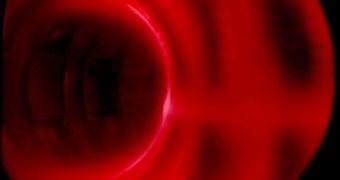Plasma has two main components, the positive and the negative clouds of gas mixed in different proportions. Neutral plasma containing equal amounts of positive and negative charges is called strongly-coupled plasma and occurs naturally on the surface of neutron stars, the cores of gas giants and may have even been the main form of matter soon after the Big Bang event, which is believed to have created the universe.
University of Michigan professor Georg Reithel has recently succeeded in trapping both the electronic and ionic components of cold plasma with the help of strong electric and magnetic fields, or a so-called nested Penning trap.
"What we observed for the first time are two charged clouds oscillating in the trapping volume. They were dense enough to affect each other's oscillation patterns due to electrostatic interactions, and that's how we could tell they were both there", said Raithel. Particles inside strongly-coupled plasma are believed to behave much like inside a liquid, thus presenting interactions much more powerful than those observed inside regular plasma.
The trapping technique could be applied to trap antimatter. In fact, scientists can't tell yet whether or not they have created antimatter until after it decays through matter-antimatter annihilation. Annihilation is also the only way physicists are able to learn more about the properties of antimatter. However, were they able to trap antimatter, a lot more could be learned about it. Further enhancements of the trapping device could lead to the simulation of quark-gluon plasma, which is often believed to be a fifth state of matter.
During the experiment, Raithel used powerful magnets to trap rubidium atoms in their ground state. A slightly weaker magnetic field in the middle ensured that the atoms were caught in that region of space, after which the atoms were cooled by scattering infrared laser light over them. After the cooling stage was completed, the rubidium atoms were excited with blue lasers in order to generate free electrons and positive rubidium ions, that were confined with electric and magnetic fields.
"This experiment shows that we generated electrons and ion numbers high enough to get correlated motions. To get to a two-component strongly-couplet plasma, we need still higher numbers of particles", said Raithel.

 14 DAY TRIAL //
14 DAY TRIAL //